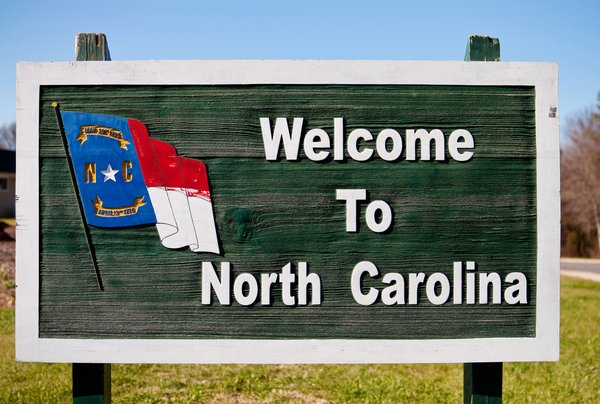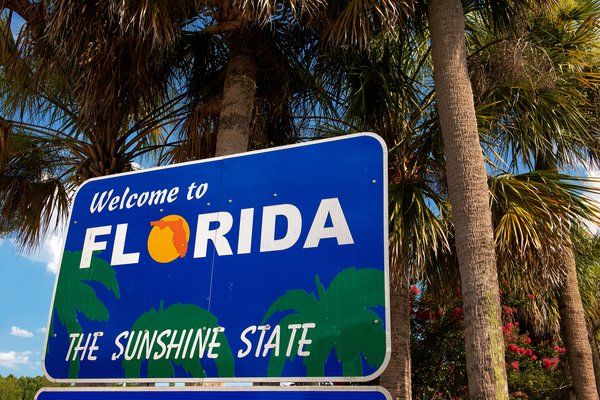Finding the cheapest states to retire is important because people who retire are generally on a fixed income. Whether you'll be living on savings, Social Security, investments, a pension, or all of the above, budgeting is important. Keeping a handle on housing, grocery, and healthcare costs can spell the difference between an enjoyable retirement and endless worry about finances. Planning for retirement is essential.
In one important way, retirement is like real estate: It can be all about location, location, and location. When it comes to expenses, not all states are created equal. (Otherwise, Hawaii would probably be a much more crowded state.)

How to find the cheapest states for retirement
How to find the cheapest states for retirement
What are some of the financial factors that go into retirement? Some, like food and shelter, are quite obvious. Food costs can be unpredictable, especially when inflation rears its ugly head. Others include the cost of electricity, the availability and costs of healthcare, and taxes.
Seniorly, an online resource community for older Americans, released a 2023 study that ranked states by costs of living, retirement incomes, housing costs, utility bills, senior poverty rates, Medicare spending, home health care costs, and tax-friendliness. The results were somewhat unexpected (Arizona, No. 17, and Florida, No. 43), with the top rankings going primarily to states in the Rocky Mountains.
Cheapest states to retire
Cheapest states to retire
When it comes to affordability, however, the cheapest states to retire were more obvious, with the Deep South and Midwest boasting the lowest cost of living for retirement. According to the Missouri Economic Research and Information Center, the lowest overall costs of living were found in Mississippi, Oklahoma, Kansas, Alabama, and West Virginia:
| Rank | State | Index | Grocery | Housing | Utilities | Transportation |
|---|---|---|---|---|---|---|
| 1 | Mississippi | 86.0 | 94.9 | 69.5 | 87.6 | 91.0 |
| 2 | Oklahoma | 86.9 | 94.6 | 70.6 | 97.0 | 90.9 |
| 3 | Kansas | 87.2 | 95.0 | 70.0 | 102.0 | 93.9 |
| 4 | Alabama | 88.2 | 97.1 | 69.8 | 101.9 | 90.5 |
| 5 | West Virginia | 89.3 | 98.3 | 69.3 | 95.0 | 100.1 |
| 6 | Georgia | 89.3 | 96.7 | 76.6 | 86.9 | 90.9 |
| 7 | Missouri | 89.9 | 96.8 | 79.2 | 95.9 | 95.0 |
| 8 | Iowa | 89.9 | 98.0 | 73.4 | 94.8 | 98.1 |
| 9 | Arkansas | 90.1 | 94.1 | 76.7 | 95.4 | 90.3 |
| 10 | Tennessee | 90.4 | 96.2 | 82.7 | 93.6 | 90.3 |
The center also found the most expensive states -- again, no great surprise -- were located in the Northeast and West Coast. Hawaii, which is expensive for people of all ages, earned a cost of living score that was more than double the cost of any of the 10 cheapest states.
| Rank | State | Index | Grocery | Housing | Utilities | Transportation |
|---|---|---|---|---|---|---|
| 42 | New Hampshire | 114.6 | 102.7 | 108.4 | 122.0 | 110.4 |
| 43 | Washington | 115.5 | 109.2 | 129.9 | 90.9 | 116.2 |
| 44 | Vermont | 115.6 | 105.4 | 131.7 | 121.2 | 114.5 |
| 45 | Oregon | 116.2 | 107.4 | 140.8 | 97.2 | 117.1 |
| 46 | Maryland | 120.7 | 108.3 | 156.4 | 108.2 | 100.2 |
| 47 | Alaska | 125.3 | 129.9 | 119.6 | 147.2 | 119.5 |
| 48 | New York | 126.6 | 104.7 | 175.5 | 102.8 | 107.0 |
| 49 | California | 139.7 | 112.8 | 204.3 | 124.7 | 126.1 |
| 50 | Massachusetts | 143.1 | 108.7 | 202.3 | 123.4 | 114.3 |
| 51 | District of Columbia | 149.7 | 105.9 | 245.1 | 111.7 | 107.0 |
| 52 | Hawaii | 181.5 | 132.7 | 314.1 | 140.3 | 131.8 |
Retirement and healthcare costs
Retirement and healthcare costs
The costs of groceries, housing, utilities, and transportation for retired people are a major consideration, but healthcare should play a major role in any retirement decision as well. The Centers for Medicare and Medicaid Services, the major provider of health insurance in the United States for senior citizens, spends the least on Vermont beneficiaries ($8,726). It’s followed by Montana ($9,338), New Mexico ($9,796), Hawaii ($9,937), and Idaho ($9,948):
| Region/state of residence | 2020 |
Average Annual % Growth (1991-2020) |
|---|---|---|
| Vermont | 8,726 | 4.2% |
| Montana | 9,338 | 4.4% |
| New Mexico | 9,796 | 4.5% |
| Hawaii | 9,837 | 4.5% |
| Idaho | 9,948 | 5.0% |
| Washington | 9,966 | 4.2% |
| New Hampshire | 10,086 | 4.6% |
| Oregon | 10,263 | 4.7% |
| Wyoming | 10,274 | 4.7% |
| Maine | 10,343 | 4.8% |
Poverty and retirement
Poverty and retirement
A good metric for determining an affordable retirement destination is poverty. States with high rates of poverty among senior citizens generally would be a poor retirement destination for good reason since older Americans may be spending more money on healthcare, transportation, food, and housing.
The poverty rate among Americans varies across geographies, according to the U.S. Census Bureau's 2022 American Community Survey, with New Hampshire posting the lowest percentage of poor senior citizens:
| State |
Percent of people in poverty, age >=65 |
|
|---|---|---|
| New Hampshire | 7.2% | |
| Utah | 8.2% | |
| Colorado | 9.4% | |
| Delaware | 9.4% | |
| Maryland | 9.6% | |
| Minnesota | 9.6% | |
| New Jersey | 9.7% | |
| Connecticut | 9.8% | |
| Washington | 10.0% | |
| Hawaii | 10.2% |
The highest poverty rates among seniors, however, were largely found in states in the Deep South and Appalachia. Almost 20% of Mississippians over the age of 65 were poor in 2022, according to the Census Bureau:
| State | Percentage of people in poverty, age >=65 | |
|---|---|---|
| Texas | 14.0% | |
| New York | 14.3% | |
| Oklahoma | 15.7% | |
| Alabama | 16.2% | |
| Kentucky | 16.5% | |
| Arkansas | 16.8% | |
| New Mexico | 17.6% | |
| West Virginia | 17.9% | |
| Louisiana | 18.6% | |
| Mississippi | 19.1% |
Retirement and taxes
Retirement and taxes
A 2022 study by Kiplinger found nine states were the most tax-friendly for retirees. The personal finance content provider ranked states as "most tax-friendly," "tax-friendly," "mixed," "not tax-friendly," and "least tax-friendly." The Kiplinger study considered state income, property, sales, motor fuel, sin, and inheritance taxes for each state. The most tax-friendly states included:
- Alaska
- Nevada
- Wyoming
- South Dakota
- Texas
- Iowa
- Mississippi
- Tennessee
- Florida
- Pennsylvania
Related investing topics
Putting all the data together, the Seniorly analysis ranked Mountain West states highest, with few exceptions. Although Wyoming's cost of living wasn't the lowest, its relatively high average retirement income for retirees, utility bills, low senior poverty rates, moderate health care costs, and tax-friendly status for retirees gave it the No. 1 ranking, followed by Utah, Montana, and Idaho.
Meanwhile, the least retirement-friendly states were located in the Northeast. Massachusetts, with its high costs of living, moderately high poverty rate for seniors, and status as a "not tax-friendly" state, ranked it No. 51, beating out New York, Connecticut, New Jersey, and California for the bottom spot.
Obviously, each of the nation's 55.8 million senior citizens -- one in six Americans -- will have to make their own decisions about the cheapest state for retirement. Some people have made excellent retirement plans and will have the ability to relocate, regardless of the cost of living; others will have to carefully consider their retirement location.
Frequently Asked Questions
Which state has the lowest cost of living for retirement?
Mississippi has the overall lowest cost of living overall, but that doesn't necessarily mean it's a great state for retirees. A Seniorly study tabbed Wyoming, based on a number of factors that include access and costs of healthcare, housing, utilities, poverty rates among seniors, retirement income, and tax-friendliness.
Which is the best state to retire in and low cost?
It depends on the individual situation. A Seniorly study advocated for Wyoming, but some people may not want to retire in a cold-weather state. Others may want to retire to a more urban area where healthcare is more accessible, and still others may be able to afford to live anywhere they want.
What state is the best financially to retire in?
A 2022 Kiplinger analysis ranked the most tax-friendly places in the country for retirement: Alaska, Florida, Iowa, Mississippi, Nevada, Pennsylvania, South Dakota, Tennessee, Texas, and Wyoming.
The Motley Fool has a disclosure policy.














